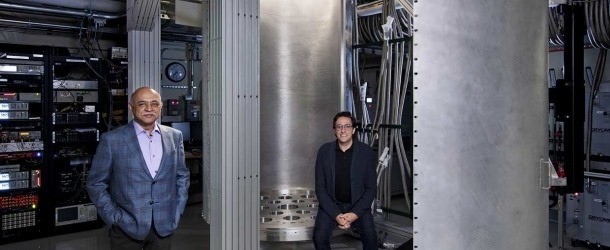IBM Envisions the Road to Quantum Computing Like an Apollo Mission

(Spectrum.IEEE) IBM laid out its roadmap for the future of quantum computing. To illustrate the enormity of the task ahead of them, Jay Gambetta, IBM Fellow and VP, Quantum Computing, drew parallels between the Apollo missions and the next generation of Big Blue’s quantum computers.
In a post published on the IBM Research blog, Gambetta said: “…like the Moon landing, we have an ultimate objective to access a realm beyond what’s possible on classical computers: we want to build a large-scale quantum computer.”
Gambetta says that Big Blue engineers will need to overcome a number of technical challenges to get to 1,121 qubits. Back in early September, IBM made available its 65-qubit Hummingbird processor, a step up from its 27-qubit Falcon processor, which had run a quantum circuit long enough for IBM to declare it had reached a quantum volume of 64.
Another issue is the so-called “fan-out” problems that result when you scale up the number of qubits on a quantum chip. As the qubits increase, you need to add multiple control wires for each qubit.
The issue has become such a concern that quantum computer scientists have adopted the Rent’s Rule that the semiconductor industry defined back in the mid-1960s. E.F. Rent, a scientist at IBM in the 1960s, observed that there was relationship between the number of external signal connections to a logic block and the number of logic gates in the logic block. Quantum scientists have adopted the terminology to describe their own challenge with wiring of qubits.
IBM plans to address these issues next year when it introduces its 127-qubit Quantum Eagle processor that will feature through-silicon vias and multi-level wiring that will enable the “fan-out” of a large density classical control signal while protecting the qubits in order to maintain high coherence time.
“Getting to a 433-qubit machine will require increased density of cryo-infrastructure and controls and cryo-flex cables, said Gambetta. “It has never been done, so the challenge is to make sure we are designing with a million-qubit system in mind. To this end, we have already begun fundamental feasibility tests.”
After Osprey comes the Condor and its 1,121-qubit processor. As Gambetta noted in his post: “We think of Condor as an inflection point, a milestone that marks our ability to implement error correction and scale up our devices, while simultaneously complex enough to explore potential Quantum Advantages—problems that we can solve more efficiently on a quantum computer than on the world’s best supercomputers.”



















